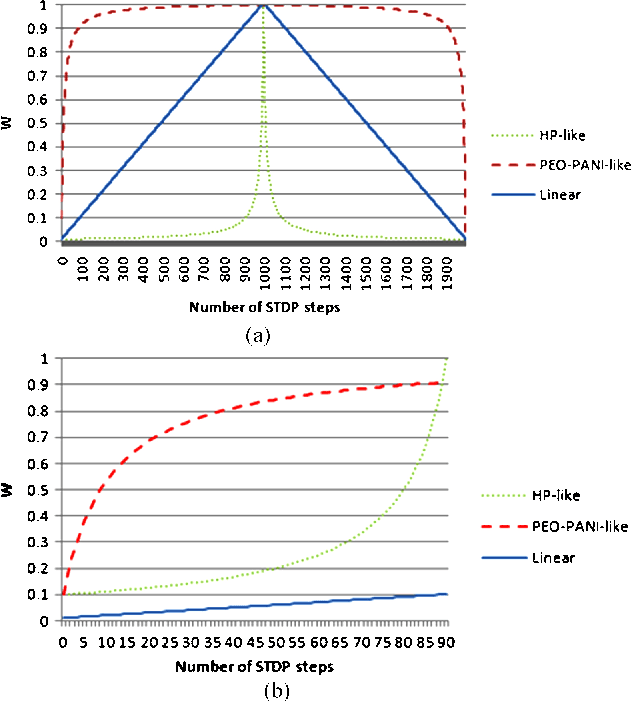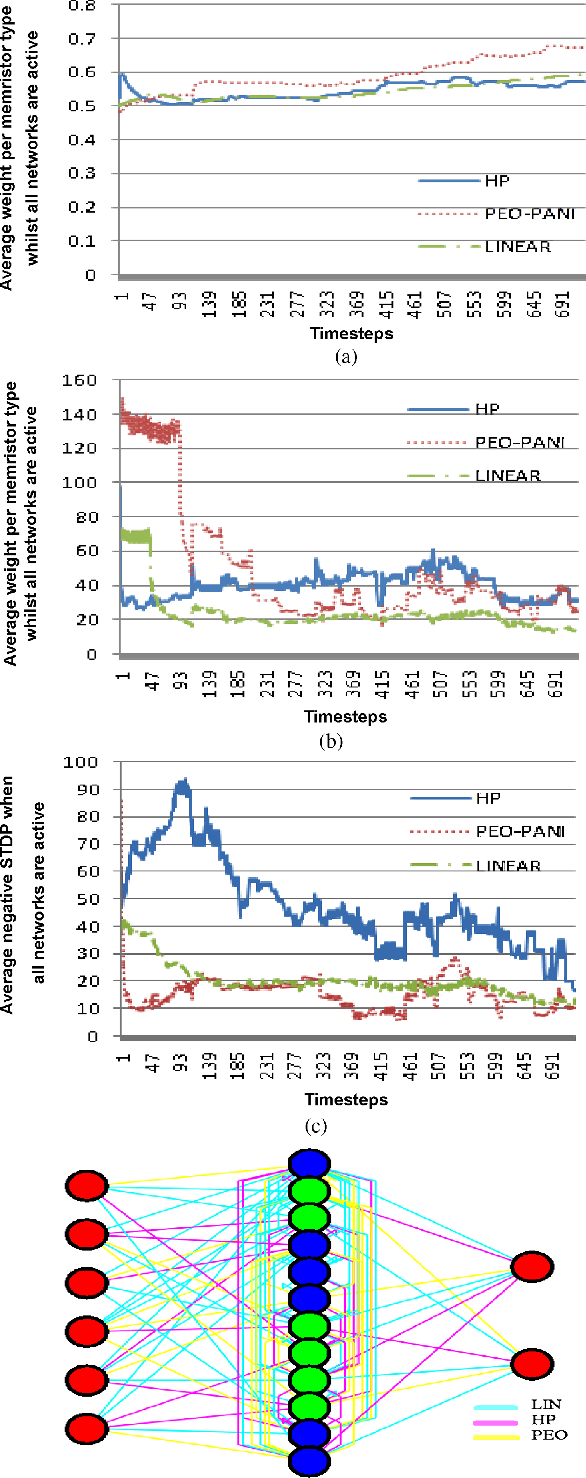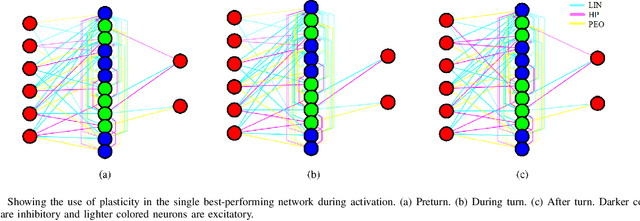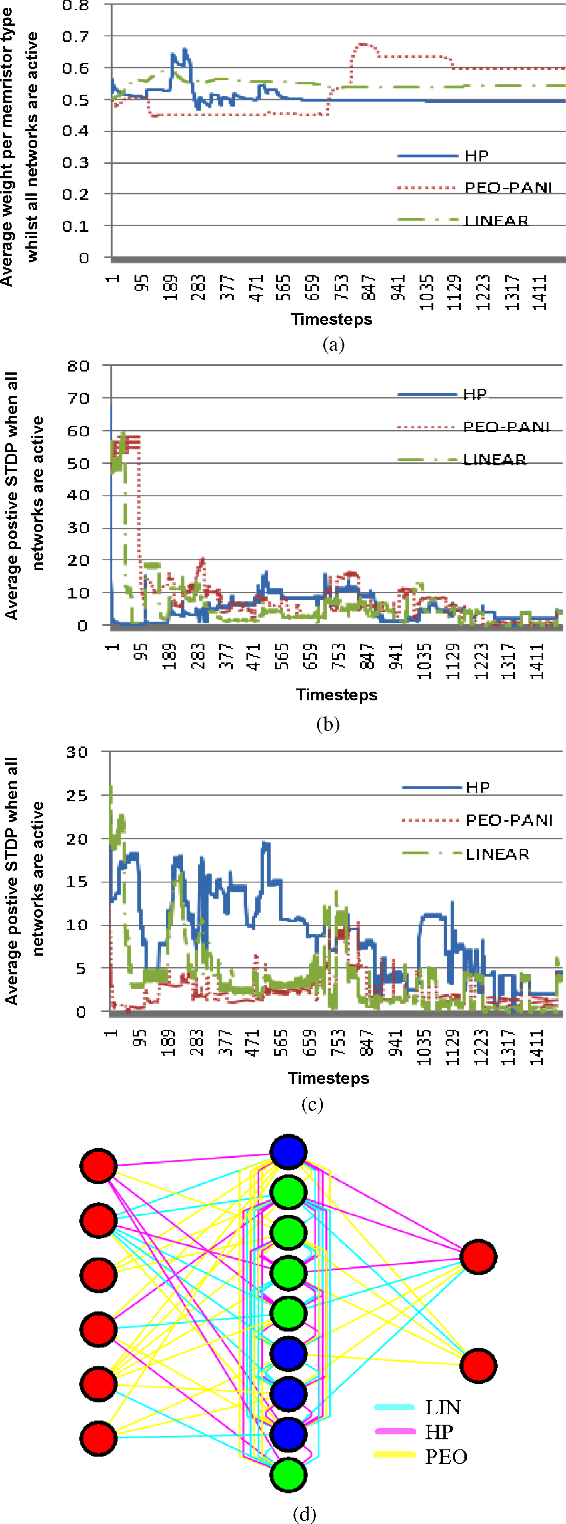Evolution of Plastic Learning in Spiking Networks via Memristive Connections
Paper and Code
Dec 14, 2012



This article presents a spiking neuroevolutionary system which implements memristors as plastic connections, i.e. whose weights can vary during a trial. The evolutionary design process exploits parameter self-adaptation and variable topologies, allowing the number of neurons, connection weights, and inter-neural connectivity pattern to emerge. By comparing two phenomenological real-world memristor implementations with networks comprised of (i) linear resistors (ii) constant-valued connections, we demonstrate that this approach allows the evolution of networks of appropriate complexity to emerge whilst exploiting the memristive properties of the connections to reduce learning time. We extend this approach to allow for heterogeneous mixtures of memristors within the networks; our approach provides an in-depth analysis of network structure. Our networks are evaluated on simulated robotic navigation tasks; results demonstrate that memristive plasticity enables higher performance than constant-weighted connections in both static and dynamic reward scenarios, and that mixtures of memristive elements provide performance advantages when compared to homogeneous memristive networks.
 Add to Chrome
Add to Chrome Add to Firefox
Add to Firefox Add to Edge
Add to Edge